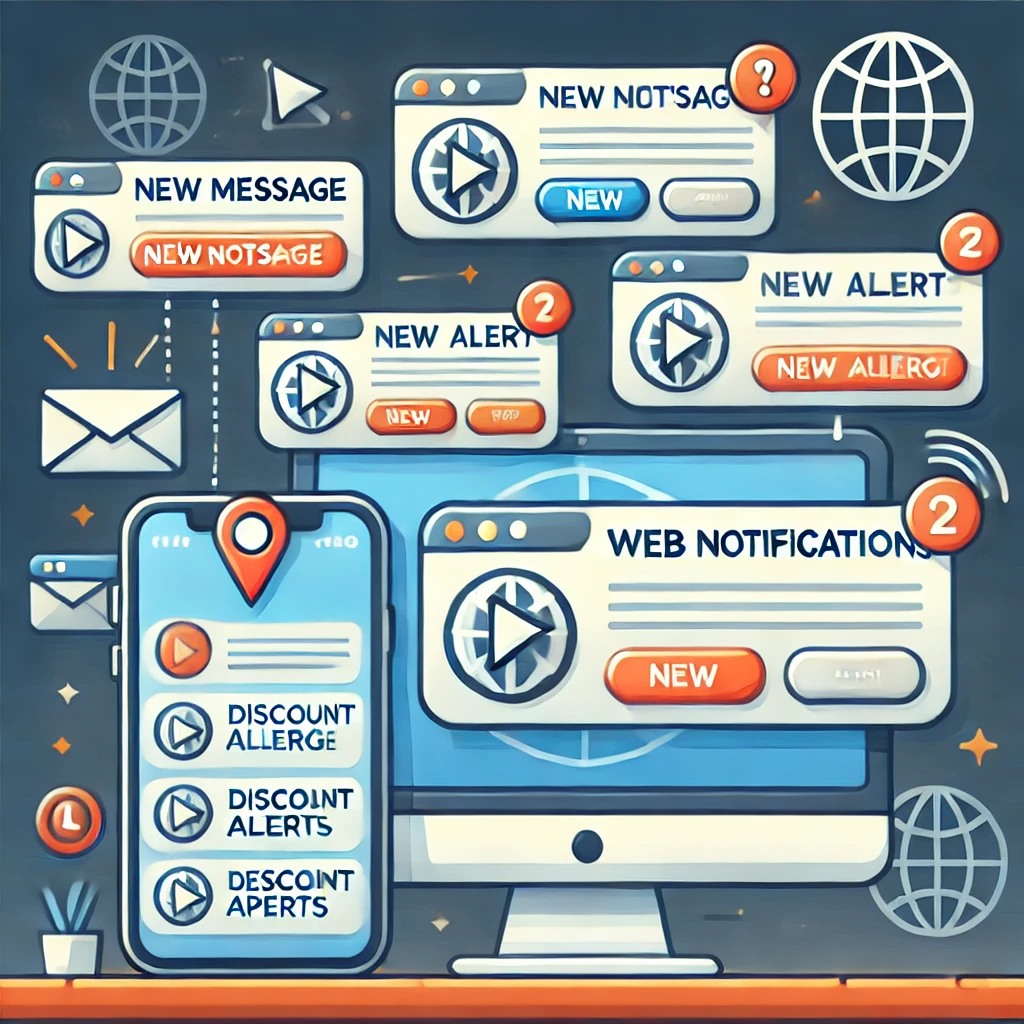
What are Web Push Notifications?
Created on 6 October, 2024 • 490 views • 3 minutes read
Web push notifications are instant alerts sent from websites to users’ devices, even when not active. These opt-in messages deliver updates and promotions, enhancing engagement and driving traffic.
What are Web Push Notifications?
In today’s fast-paced digital landscape, staying connected with your audience is more crucial than ever. One powerful tool that has emerged to facilitate this connection is web push notifications. But what exactly are web push notifications, and how can they benefit businesses and users alike? Let's delve into this topic to understand its significance, mechanics, and advantages.

Understanding Web Push Notifications
Web push notifications are messages sent by websites to users' devices, even when the user is not actively browsing the site. These notifications appear on the user's desktop or mobile screen and can provide real-time updates, promotional messages, reminders, and more. Unlike traditional emails or SMS messages, web push notifications have a unique edge: they are quick, direct, and engage users instantly.
How Do Web Push Notifications Work?
- User Permission: When a user visits a website that offers push notifications, they will receive a prompt asking for permission to send notifications. This is an essential first step, as it ensures that users have control over what notifications they receive.
- Subscription: Once the user grants permission, their device subscribes to the website's push notification service. This creates a unique identifier for that user, allowing the website to send tailored notifications.
- Sending Notifications: The website can now send notifications through a push service, typically provided by a browser or a third-party service. These notifications can include text, images, and links, making them visually appealing and interactive.
- Delivery: When a notification is sent, it reaches the user's device instantly, whether the user is on the website or not. The notification will appear as a pop-up on the screen, drawing the user's attention.
- User Interaction: Users can interact with notifications by clicking on them, which can direct them back to the website or specific content. This can drive engagement, boost website traffic, and increase conversions.
Benefits of Web Push Notifications
- Real-Time Communication: Web push notifications allow businesses to communicate with users in real time. Whether it’s breaking news, flash sales, or reminders, businesses can keep their audience informed instantly.
- Increased Engagement: By sending relevant and personalized notifications, businesses can significantly boost user engagement. Users are more likely to interact with notifications that are tailored to their interests.
- Higher Conversion Rates: Push notifications can drive traffic back to your website, leading to higher conversion rates. Businesses can remind users of abandoned carts, special promotions, or new product launches, encouraging them to take action.
- Cost-Effective Marketing: Compared to traditional advertising methods, web push notifications are a cost-effective way to reach a large audience. They require minimal investment and can yield high returns in terms of engagement and conversions.
- User Retention: By keeping users informed and engaged, web push notifications can help improve user retention. Regular updates and personalized messages can encourage users to return to your site frequently.
Best Practices for Web Push Notifications
To make the most of web push notifications, businesses should adhere to a few best practices:
- Be Relevant: Ensure that notifications are relevant to your audience’s interests and behaviors. Personalization is key to enhancing engagement.
- Timing Matters: Send notifications at optimal times when users are most likely to engage. Avoid sending messages during odd hours that may annoy users.
- Limit Frequency: Avoid overwhelming users with too many notifications. A well-timed, well-placed notification is more effective than constant bombardment.
- Clear Call to Action: Every notification should have a clear call to action (CTA). Whether it’s to shop now, learn more, or read an article, guide users on what to do next.
- Test and Optimize: Regularly test different types of notifications and analyze user responses. Use this data to optimize your strategies for better results.
Conclusion
Web push notifications are an effective tool for businesses looking to engage their audience in a direct and meaningful way. By leveraging this technology, businesses can enhance their communication strategies, drive user engagement, and ultimately boost conversions. As the digital landscape continues to evolve, adopting web push notifications can give businesses a competitive edge and ensure they remain connected with their users in real time.
Recommended Partner: QuickPanel
If you're looking to implement web push notifications on your website, QuickPanel is a reliable and user-friendly solution. Their platform simplifies the process of integrating, managing, and sending push notifications.
For a detailed guide on how to add web push notifications using QuickPanel, visit the following link: How to Add Web Push Notifications with QuickPanel.